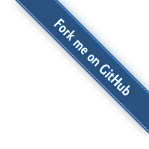
Publications
Also, visit my Scholar page.
2024
J. Martinsson, O. Mogren, M. Sandsten, T. Virtanen, From Weak to Strong Sound Event Labels using Adaptive Change-Point Detection and Active Learning, arXiv preprint, arXiv (2024)
M. Willbo, A. Pirinen, J. Martinsson, E. Listo Zec, O. Mogren, M. Nilsson, Impacts of Color and Texture Distortions on Earth Observation Data in Deep Learning, 2nd Machine Learning for Remote Sensing Workshop at ICLR, ML4RS (2024)
E. Listo Zec, J. Östman, O. Mogren, D. Gillblad, Efficient Node Selection in Private Personalized Decentralized Learning, Northern Lights Deep Learning Conference, NLDL (2024)
2023
M. Toftås, E. Klefbom, E. Listo Zec, M. Willbo, O. Mogren, Concept-aware clustering for decentralized deep learning under temporal shift, Federated Learning and Analytics in Practice: Algorithms, Systems, Applications, and Opportunities workshop at ICML, FL-ICML (2023)
A. Pirinen, O. Mogren, M. Västerdal, Fully Convolutional Networks for Dense Water Flow Intensity Prediction in Swedish Catchment Areas, 35th Annual Workshop of the Swedish Artificial Intelligence Society SAIS, SAIS (2023)
X. Lan, J. Taghia, F. Moradi, M. Ali Khoshkholghi, E. Listo Zec, O. Mogren, T. Mahmoodi, A. Johnsson, Federated learning for performance prediction in multi-operator environments, ITU Journal on Future and Evolving Technologies, ITUJ (2023)
E. Listo Zec, J. Östman, O. Mogren, D. Gillblad, Private Node Selection in Personalized Decentralized Learning, arXiv preprint, arXiv (2023)
2022
E. Ekblom, E. Listo Zec, O. Mogren, EFFGAN: Ensembles of fine-tuned federated GANs, IEEE International Conference on Big Data, IEEE Big Data (2022)
J. Martinsson, M. Willbo, A. Pirinen, O. Mogren, M. Sandsten, Few-shot bioacoustic event detection using a prototypical network ensemble with adaptive embedding functions, Detection and Classification of Acoustic Scenes and Events, DCASE (2022)
S. Fallahi, A. Mellquist, O. Mogren, E. Listo Zec, L. Hallquist, Financing Solutions for Circular Business Models: Exploring the Role of Business Ecosystems and Artificial Intelligence, Business Strategy and the Environment, Business Strategy and the Environment (2022)
J. Martinsson, M. Runefors, H. Frantzich, D. Glebe, M. McNamee, O. Mogren, A Novel Method for Smart Fire Detection Using Acoustic Measurements and Machine Learning: Proof of Concept, Journal of Fire Technology, Fire Technol. (2022)
E. Listo Zec, E. Ekblom, M. Willbo, O. Mogren, S. Girdzijauskas, Decentralized adaptive clustering of deep nets is beneficial for client collaboration, International Workshop on Trustworthy Federated Learning, FL-IJCAI (2022)
2021
J. Martinsson, E. Listo Zec, D. Gillblad, O. Mogren, Adversarial representation learning for synthetic replacement of private attributes, IEEE International Conference on Big Data, IEEE BigData (2021)
N. Onoszko, G. Karlsson, O. Mogren, E. Listo Zec, Decentralized federated learning of deep neural networks on non-iid data, 2021 Workshop on Federated Learning for User Privacy and Data Confidentiality at the 38th International Conference on Machine Learning, FL-ICML 2021 (2021)
A. Hilmkil, S. Callh, M. Barbieri, L. René Sütfeld, E. Listo Zec, O. Mogren, Scaling Federated Learning for Fine-Tuning of Large Language Models, International Conference on Applications of Natural Language to Information Systems, NLDB 2021 (2021)
2020
E. Listo Zec, O. Mogren, J. Martinsson, L. René Sütfeld, D. Gillblad, Specialized federated learning using a mixture of experts, Arxiv Preprint 2020, Arxiv 2020 (2020)
D. Ericsson, A. Östberg, E. Listo Zec, J. Martinsson, O. Mogren, Adversarial representation learning for private speech generation, The Workshop on Self-supervision in Audio and Speech at the 37th International Conference on Machine Learning, ICML-SAS (2020)
2019
J. Martinsson, A. Schliep, B. Eliasson, O. Mogren, Blood glucose prediction with variance estimation using recurrent neural networks, Journal of Healthcare Informatics Research, JHIR (2019)
E. Listo Zec, O. Mogren, Grammatical gender in Swedish is predictable using recurrent neural networks, Conference of the Swedish Cognitive Society, SweCog (2019)
J. Martinsson, O. Mogren, Semantic segmentation of fashion images using feature pyramid networks, Second Workshop on Computer Vision for Fashion, Art and Design at ICCV, CVCREATIVE (2019)
M. Korneliusson, J. Martinsson, O. Mogren, Generative modelling of semantic segmentation data in the fashion domain, Second Workshop on Computer Vision for Fashion, Art and Design at ICCV, CVCREATIVE (2019)
O. Mogren, R. Johansson, Character-based recurrent neural networks for morphological relational reasoning, Journal of language modelling, JLM 2019 (2019)
2017
M. Kågebäck, O. Mogren, Disentanglement by Penalizing Correlation, NIPS Workshop on Learning Disentangled Features: from Perception to Control, DisentangleNIPS (2017)
O. Mogren, R. Johansson, Character-based recurrent neural networks for morphological relational reasoning, Subword & Character Level Models in NLP (SCLeM) workshop at EMNLP, SCLeM (2017)
2016
S. Almgren, S. Pavlov, O. Mogren, Named entity recognition in Swedish health records with character-based deep bidirectional LSTMs, Fifth workshop on building and evaluating resources for biomedical text mining (BioTxtM) at COLING, BioTxtM (2016)
O. Mogren, C-RNN-GAN: Continuous recurrent neural networks with adversarial training, Constructive Machine Learning Workshop (CML) at NIPS, CML (2016)
J. Hagstedt P Suorra, O. Mogren, Assisting discussion forum users using deep recurrent neural networks, Representation learning for NLP, RepL4NLP at ACL, RepL4NLP (2016)
2015 and earlier
O. Mogren, M. Kågebäck, D. Dubhashi, Extractive summarization by aggregating multiple similarities, Recent advancements in NLP, RANLP (2015)
N. Tahmasebi, L. Borin, G. Capannini, D. Dubhashi, P. Exner, M. Forsberg, G. Gossen, F. D. Johansson, R. Johansson, M. Kågebäck, O. Mogren, P. Nugues, T. Risse, Visions and open challenges for a knowledge-based culturomics, International Journal on Digital Libraries, IJDL (2015)
P. Damaschke, O. Mogren, Editing simple graphs, Journal of Graph Algorithms and Applications, JGAA (2014)
M. Kågebäck, O. Mogren, N. Tahmasebi, D. Dubhashi, Extractive summarization using continuous vector space models, 2nd Workshop on Continuous Vector Space Models and their Compositionality at EACL, CVSC (2014)
O. Mogren, O. Sandberg, V. Verendel, D. Dubhashi, Adaptive dynamics of realistic small-world networks, European Conference on Complex Systems, ECCS (2009)